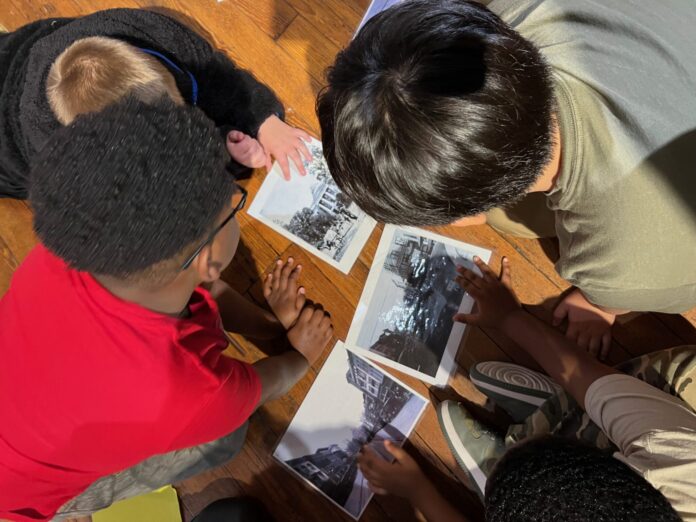Schools in North Carolina and around the country have a problem — standardized testing. We expect students that are vastly different from each other to pass a standard test that assumes they all test the same.
When will our education leaders realize that we need a better and more effective way to “test” our students at the end of the year that causes less stress and anxiety for students, will allow students to show their growth, and be more representative of teacher effectiveness?
My nonstandard class
This year, I had a class of 22 students. Among my students were a mix of Academically/Intellectually Gifted (AIG) learners, English Language Learners (ELL), Exceptional Children (EC), and students who were “on the bubble” for meeting specific benchmarks or considered “low performing” in relation to those benchmarks.
With this vastly different group of students this year, I was expected to teach each one on their specific level. I had to differentiate lesson plans and teach the whole child based on their differences and skill levels:
- My AIG students had differentiated lessons that helped to target their growth and love of learning.
- My ELL student had differentiated lessons that helped with learning English concepts that built onto his home language.
- My EC students had differentiated lessons and extra teacher support from another teacher that built on their level of learning and understanding.
- My “bubble kids” had differentiated lessons that targeted grade level concepts
- Students considered “low performing” had differentiated lessons that targeted the skills that they needed to learn in order to reach grade level.
The whole school year was spent teaching these children of different abilities and levels, grade-level content that was differentiated to where they would be able to learn, succeed, and grow. So why do we expect all students at the end of the year — regardless of abilities and performance levels — to take a standardized test when they are not “the same?”
Sign up for the EdDaily to start each weekday with the top education news.
Student stress over EOGs
Several of my students’ parents, year after year, have expressed the overwhelming stress and anxiety their children have when taking the End of Grade (EOG) tests. I have seen this firsthand each year.
We gave our students mock EOGs this year to better prepare them for the type of questions they would see on the actual EOG. Students knew they would not receive a grade on this assignment and teachers would use the information from it to help better prepare them for the actual EOG.
While administering this mock EOG, I had several students just freeze in the middle of the test. When asked what was wrong, they were able to verbalize that they were just too stressed and afraid they would do horrible on it, even though they knew it wasn’t for a grade.
At the end of this year, when we received results from their actual EOG’s, I realized several of those students that had severe anxiety during the mock EOG performed poorly on the test. These students completely broke down and cried because they thought they wouldn’t be allowed to move up to the next grade.
Even after explaining to them that one test would not determine if they would be held back — that teachers take into consideration all of the diagnostics they take through the year that showed their growth — I still had students unable to comprehend how doing poorly on this one standardized test would not hold them back from being promoted to the next grade. Students do not need this kind of stress and anxiety over one test that does not determine being promoted.
Standardized tests at the end of the year should not be a part of a teacher’s evaluation and effectiveness. According to a report from the Economic Policy Institute, “Using test scores to evaluate teachers unfairly disadvantages teachers of the neediest students.” This is because existing standardized testing models — even those that incorporate “value-added modeling,” which attempts to adjust for school and student characteristics — are not sophisticated enough to fully account for student and school variability, and only measure student performance at a single point in time.
The authors of the report also note:
Because of the range of influences on student learning, many studies have confirmed that estimates of teacher effectiveness are highly unstable. One study examining two consecutive years of data showed, for example, that across five large urban districts, among teachers who were ranked in the bottom 20% of effectiveness in the first year, fewer than a third were in that bottom group the next year, and another third moved all the way up to the top 40%. There was similar movement for teachers who were highly ranked in the first year. Among those who were ranked in the top 20% in the first year, only a third were similarly ranked a year later, while a comparable proportion had moved to the bottom 40%
EOGs are unreliable in showing teacher effectiveness, so there needs to be a better way to judge a teacher’s performance in the classroom.
Diagnostic assessment instead
Instead of a standardized test at the end of the year, I propose a diagnostic assessment that will allow students to show growth gained from the beginning of the year to the end. This would be a better representation of what the students have learned throughout the year. It would also alleviate stress and anxiety of passing “the big test” in order to be promoted to the next grade.
Students would be able to feel more at ease and more confident in their abilities if they were to be “tested” on how they have grown. I have seen this firsthand when my students take their iReady or mClass diagnostic assessments. To see the look on their faces, to know that they have been able to show growth over the course of a year, is amazing. The students feel proud of the growth and the progress they have made, instead of feeling like they have failed by not meeting a proficiency standard on a standardized test.
This would also be a better way of evaluating teacher effectiveness and progress. Data would show that effective teachers are able to continuously grow their students no matter where they start. This would be a better reflection of the ability of the teacher in the classroom as opposed to being evaluated on “standard” test scores.
Since our students and teachers are not “standard,” we as a state need to do better at showing student and teacher progress, effectiveness, and growth by changing how we evaluate student learning and teacher effectiveness at the end of the school year.





